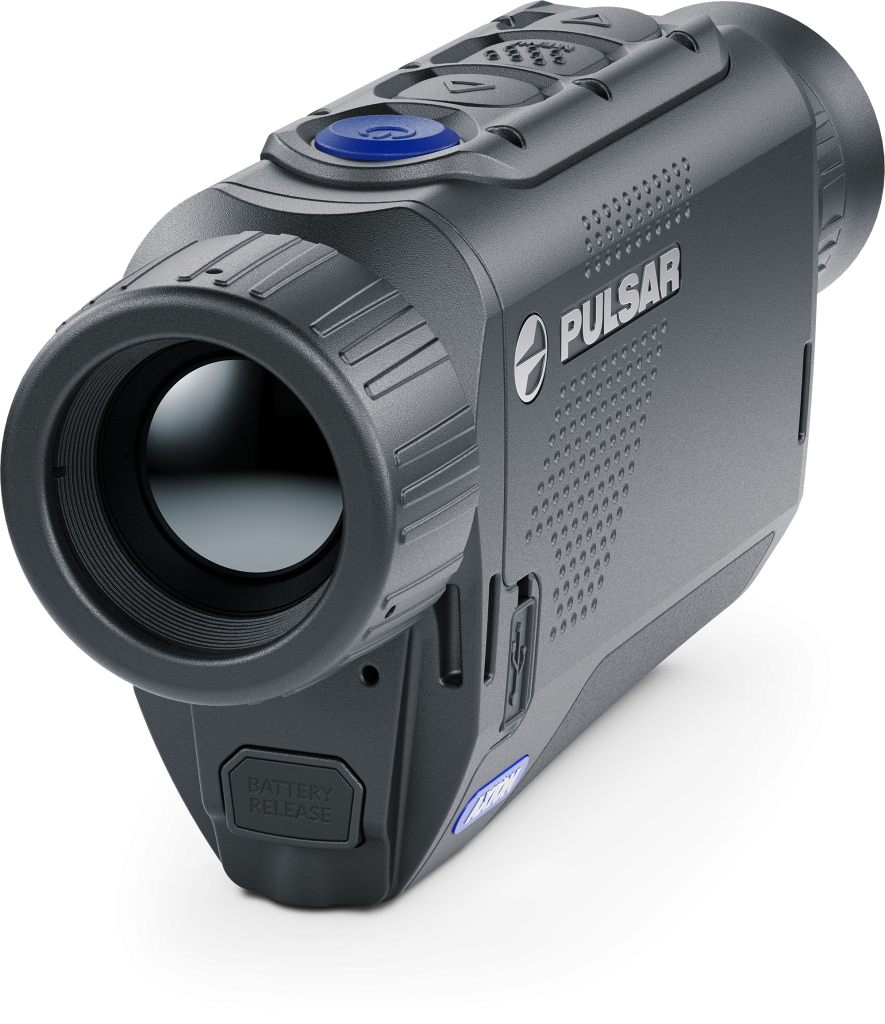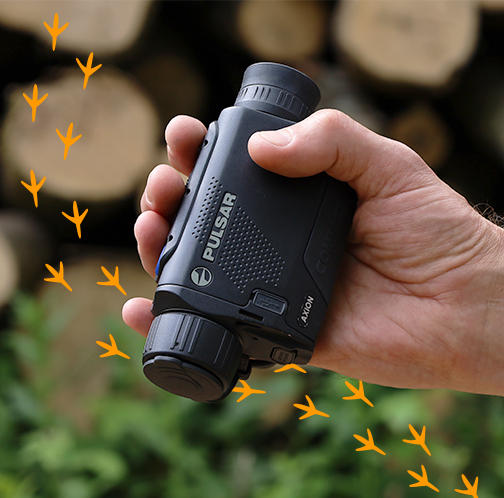Pocket-sized & Powerful: Why the Axion Compact is a Must Have for Birdwatchers
If you’re a birdwatcher, you may have noticed the emerging popularity of thermal imaging and started to ask yourself whether you should invest in one of these devices. But where should you start? Let us introduce you to what we believe is the perfect device for any birdwatcher starting out with thermal — the Pulsar Axion Compact series.
The Axion Compact series offers, as their names suggest, four extremely compact and lightweight thermal imaging monoculars: the Axion Compact XG35, Axion Compact XG35, Axion XQ30 Pro, and the new Axion Compact XQ19. Each monocular has been designed to provide a powerful performance from a device that can fit effortlessly in a pocket or a pack.
How Thermal Imaging Works
When you think of thermal imaging, you’ll most likely picture a green image shot at night. But outside of the movies, thermal imaging is an invaluable tool that can be used both at night and in daylight — making it an essential bit of kit for any nature observer.
These devices work by detecting heat with a powerful sensor working to translate that heat source into a pin-sharp, informative image — they’re not fooled by shadows or cryptic camouflage. So, if there’s something out there, a thermal imager will find it, which opens up a wide range of possibilities.
For example, if you know that something is out there and where it is, you’ll spend less time waiting for a chance sighting; rather, you’ll know exactly where to look when you switch from thermal to binos. Thermal will even enable you to plan your movements, meaning (if you’re a wildlife photographer, for example), you can get closer without spooking wildlife — providing more opportunities to capture the perfect shot.

How Can Thermal Help with Birdwatching?
Thermal imaging is an invaluable tool for any birdwatcher. Whether you’re just starting out or you’ve got years of experience under your belt, these devices are about to make your observations easier than ever. It is worth mentioning here that thermal imaging devices aren’t intended to replace your current daytime optics and, as good as the Pulsar Axion Compact monoculars are, your hard-earned fieldcraft will still be needed when it comes to identifying species.
Here are a few instances in which thermal imaging would be beneficial to birdwatchers:
- Scanning Brush & Grass: In open fields or scrub, spotting ground-feeding birds such as larks and sandpipers with the naked eye can be a tricky undertaking. The Axions’ powerful thermal sensors, however, will pick these out with ease, showing up on-screen as bright dots.
- Night Roosts & Surveys: During nocturnal surveys, a thermal imager will allow you to discover birds such as owls, nightjars, or other roosting birds. You can then plan your movements accordingly, walking quietly in order not to disturb them.
- Vegetated Birdwatching: Thermal is perfect for birdwatching in lightly forested areas, revealing branch- or ground-dwelling species that would otherwise be hidden by foliage and understory.
- Nest & Roost Box Monitoring: Monitoring occupancy, activity, and, in some instances, breeding success, can be achieved non-invasively, showing the heat signatures of eggs or chicks without having to approach them.
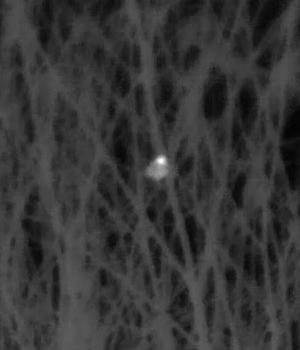
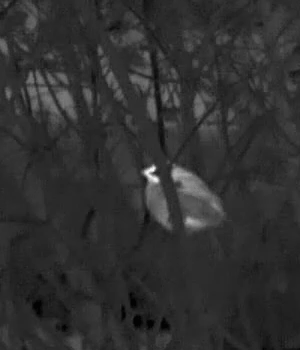
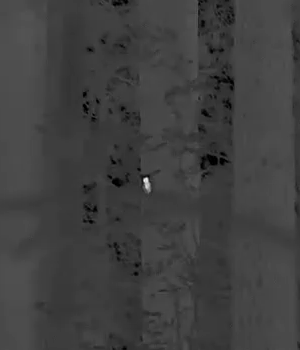
The Axion Compact’s Key Features:
Compact Design:
Perhaps the most obvious design point of the Axion Compact is just that, its compactness. Fitting effortlessly in the palm during observations and slotting nicely into a pocket or pack when not in use, this monocular has been built for on-the-fly observation, so you can swap between thermal and day optics quickly, without worrying about storing bulky equipment.
User-friendly Controls:
Each Axion Compact device features an ergonomic design to fit comfortably in the hand and remain comfortable to use over long periods of observation. Three buttons along the top of the device are arranged in such a way as to allow your fingers to align naturally when gripping the device, providing complete control over digital functions with minimal movement needed — perfect for fatigue-free observation over long periods of time.
Built-in Video Recording and Connectivity Options:
Every model in the Axion Compact features a built-in camera and video recorder (with audio) — perfect for collecting data which can be studied at a later date. These images and videos can be exported via wired connection or through the dedicated Stream Vision app. This app will also allow you to use your smartphone or tablet as a second screen, which is ideal for group observations, removing the need to pass the device around.
Extended Battery Life:
Each device in the Pulsar Axion Compact series comes with an APS3 replaceable battery, providing up to 8 hours of operation on a single charge (depending on temperature and model), enabling extended periods of observation. A quick battery change is nice and easy, and can be carried out in complete darkness.

What Each Model Has to Offer
Each device is fitted with a sensitive thermal sensor and powerful Germanium objective lens, achieving varying detection ranges and thermal sensitivity ratings. See below for a breakdown of what each device can achieve.
Axion Compact XQ19
The Axion Compact XQ19 is the most accessible device in the series, boasting the largest field of view at 19.5° with the smallest price tag — the perfect introduction to thermal imaging.
With a 384×288, 17µm, <18 mK sNETD thermal sensor and a 19mm f1.0 objective lens, this model provides excellent thermal sensitivity, which is especially useful when it comes to monitoring nest boxes in lower contrast scenarios. Its wide FOV reduces the need to scan around whilst searching for birds.
To Consider:
The lower resolution sensor in the XQ19 model provides less spatial detail at longer distances. If your aim is to identify fine details at longer distances, perhaps consider one of the other models with a higher resolution sensor.
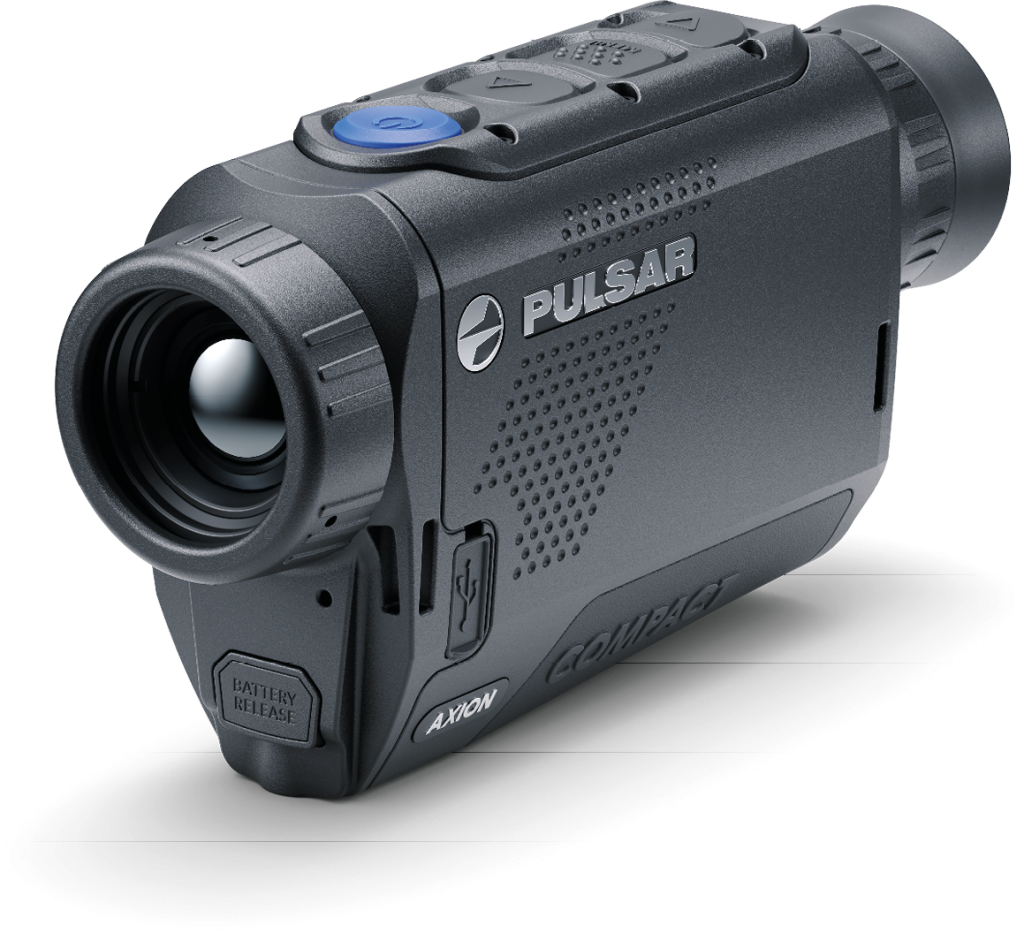
Axion Compact XG30
The Axion Compact XG30 offers a wide 14.6° field of view and a larger digital magnification range, making it ideal for detection without excessive searching and scanning, as well as close-up observation.
With a 640×480, 12µm, <20 mK sNETD thermal sensor and a 30mm f1.2 objective lens, this model achieves greater image detail, allowing you to confidently identify smaller animas, eggs, and chicks at moderate distances (up to 1300m). Its larger lens is fast, with a better performance in low light and low contrast scenes — perfect for monitoring nest boxes at a considerate distance.
To Consider:
The larger lens on this model does mean it is slightly heavier. At 14.6°, its FOV is a little narrower than the XQ19, but still wide enough to enable comfortable observation with minimal searching and scanning.

Axion Compact XG35
The Axion Compact XG35 features a powerful f1.0 objective lens, offering the longest detection range of the series with a thermal sensitivity rating that matches that of the Axion XQ30 Pro.
Excellent for long-distance detection (up to 1750m), this model will provide higher detail at greater distances than other iterations in the series. Its f1.0 objective lens (compared to the XG30’s f1.2 lens) will capture more thermal radiation — performing better in environments with lower thermal contrast. This device is best for monitoring at longer distances, cutting down on the risk of disturbing subjects.
To Consider:
The XG35’s 12.5° FOV is the narrowest in the Axion Compact range, meaning more effort is needed when scanning.
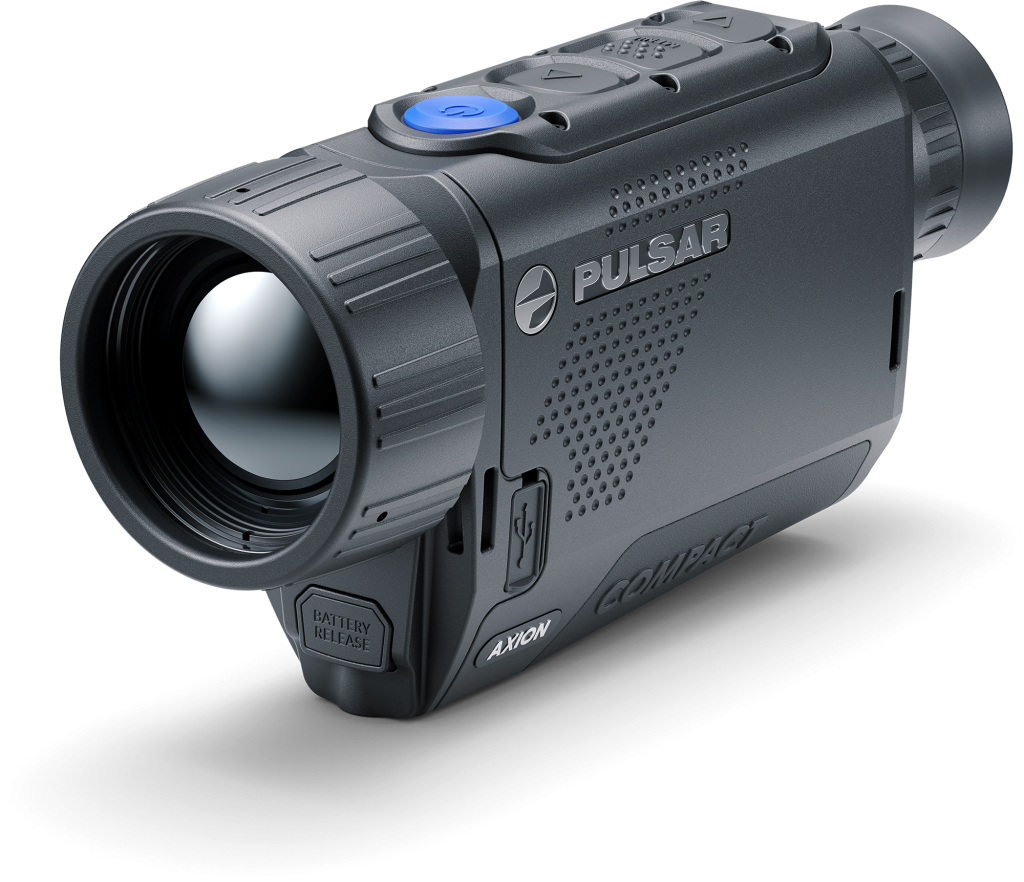
Axion Compact
XQ30 Pro
The Axion XQ30 Pro features the highest level of thermal sensitivity thanks to its <20 mK sNETD rating, making it perfect for use in any weather conditions.
This model could be considered the perfect middle ground, with a slightly larger detection range (up to 1050m) than the Axion Compact XQ19, good thermal sensitivity, and excellent thermal detail. Perfect for those who want to monitor nest boxes at moderate distances, providing adequate identification capabilities at a lower price than the 640×480 models.
To Consider:
With a 384×288, 17µm, <20mK sNETD thermal sensor, this model offers lower resolution, which means fewer fine details at a distance. Plus, whilst its 13.3° FOV is not the narrowest in the series, slightly more effort is required when searching and scanning when compared to the XQ19 and XG30 models.
